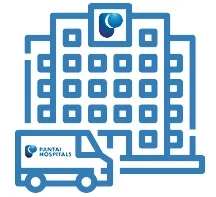脑部受伤、肿瘤、中风、脑动脉瘤、脑部感染或其他健康问题,可能会导致颅内压力升高。这种危险的状况称为颅内压升高(ICP)。
脑脊液(CSF)起到保护脑部的缓冲作用。但一旦颅内压力升高,就必须接受适当治疗。
俗称脑部手术的神经外科,是专门诊断和手术治疗脑部和周边神经疾病或损伤的医学科别,适用于成人和儿童患者。
神经外科医生是经过培训的专家,负责诊断和治疗影响神经系统的疾病。他们不仅进行手术治疗,也会提供非手术的医疗方案。
什么是脑室外引流(EVD)?
脑室外引流(EVD)是一种用来暂时缓解脑内压力升高的装置,适用于脑脊液流动受阻的情况。
它是一条插入颅内的塑料导管,将脑室或腰椎腔内的液体引流至体外的封闭系统中。
脑室外引流通常用于以下情况:
- 减少因脑脊液积聚引起的颅内压升高
- 引流受感染的脑脊液
- 手术后或外伤造成的脑内出血引流
EVD 神经外科手术是如何进行的?
病人入院后,会在床头、病房门口及床尾处放置“EVD”提示牌。
必须确保家属了解 EVD 监测系统的重要性,以及病人卧床时的正确姿势。
- 调整水平与装置设置
导管会从手术室直接连接到脑室。护士会根据医生指示用吊瓶架设定好引流装置,并调整至适当水平。
- 闭合 EVD 引流
除了以下几种情况,EVD 应持续开放以维持引流:
- 转移病人时
- 调整病人姿势时
- 更换引流系统任何部件时
- 取脑脊液样本时
- 监测观察
护士需要:
- 确保病人头部抬高至少30度,有助于脑脊液排出。
- 留意感染迹象,如导管口流脓、肿胀、发红等。
- 密切监测病人的血压、心率与呼吸情况。
- 脑脊液采样
只有在神经外科医生指示下,才可采集脑脊液样本。
- 记录资料
需详细记录脑脊液引流量及颅内压相关资料。
哪些情况不适合进行 EVD?
以下患者通常不适合进行 EVD:
- 头皮有感染的患者
- 正在接受抗凝治疗的患者
- 脑部有肿瘤的患者
- 有小脑扁桃体下疝畸形的患者
- 脑部周围组织有感染的患者
- 有闭塞性脑积水的患者
EVD 可能出现哪些并发症?
由于这是侵入性手术,可能会有一些并发症。
- 出血:EVD 穿刺部位有时会出血,尤其是凝血功能障碍的患者。
- 感染:EVD 属异物插入脑内,有感染的风险。
- 神经系统并发症:导管插入过深可能影响脑组织,虽然少见,但若未及时处理,有可能导致昏迷。
- 机械性并发症:这类并发症主要有三种。
- 阻塞 - 导管被血块堵塞,脑压升高,可能造成脑损伤。
- 位置偏差 - 当导管尖端没有正确进入第三脑室或侧脑室时,就可能发生此问题。如果穿过关键脑区,可能引发神经相关症状。
- 导管移位 - 尽管放置后会使用金属钉或缝线固定,但导管仍有可能从原本位置移开。
其他可能并发症:
- 癫痫发作
- 中风
- 脑脊液外漏
尽管存在风险,EVD 手术仍是一种关键的救命措施,可在脑部因感染或创伤导致压力升高时,及时引流,缓解症状。
与班台医院预约
如果您对 EVD 有任何疑问,请立即与我们联系预约。我们的多学科医疗保健团队可为患者提供咨询,并让患者享有最佳的护理。我们保证为您提供适合您需求的最佳护理。
班台医院致力于患者安全和优质服务,并获马来西亚健康质量协会 (MSQH) 认证。
参考文献
- External ventricular drains: Management and complications. Available at https://www.ncbi.nlm.nih.gov/pmc/articles/PMC4450504/ [Assessed on 14 April 2022]
- NeuroEMCrit – What Every Clinician Should Know about External Ventricular Drains (EVDs). Available at https://emcrit.org/emcrit/external-ventricular-drains-evd/ [Accessed on 14 April 2022]
- Risk factors for hydrocephalus following fourth ventricle tumor surgery: A retrospective analysis of 121 patients. Available at https://journals.plos.org/plosone/article?id=10.1371/journal.pone.0241853 [Accessed on 14 April 2022]
- Caring for neurosurgical patients with external ventricular drains. Available at https://www.nursingtimes.net/clinical-archive/neurology/caring-for-neurosurgical-patients-with-external-ventricular-drains-26-03-2018/ [Accessed on 14 April 2022]


 请求预约
请求预约.webp?sfvrsn=276ce14_1/vector-(3).webp) 国际患者
国际患者

.webp)


 Find A Doctor
Find A Doctor


.png?sfvrsn=71934c60_8)
.png?sfvrsn=1370dfbd_9)






